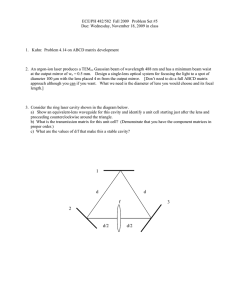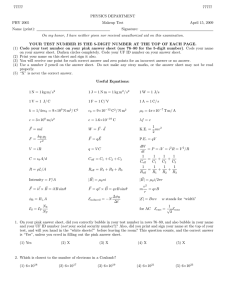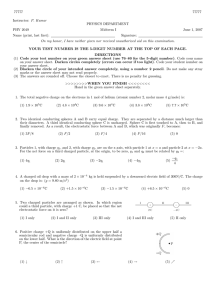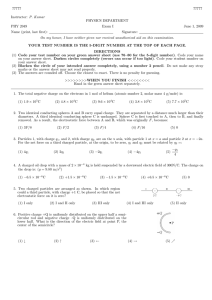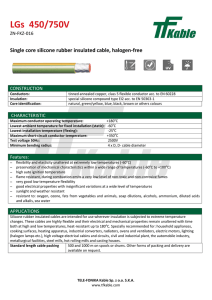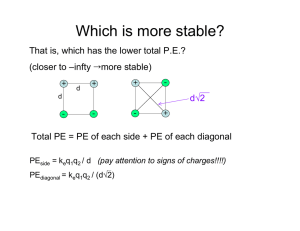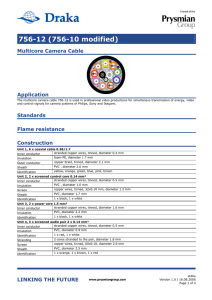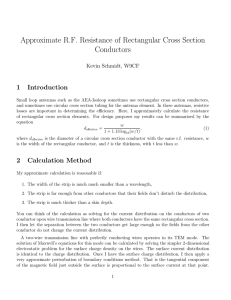77777 P. Kumar PHYSICS DEPARTMENT PHY 2049
advertisement
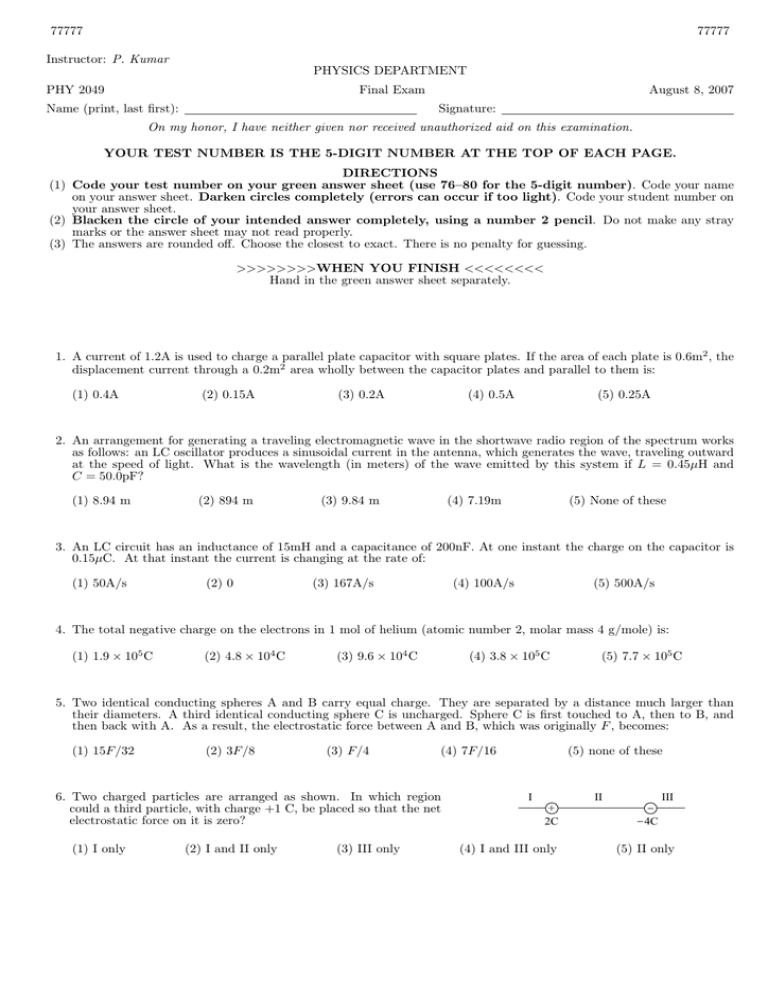
77777 77777 Instructor: P. Kumar PHYSICS DEPARTMENT PHY 2049 Final Exam Name (print, last first): August 8, 2007 Signature: On my honor, I have neither given nor received unauthorized aid on this examination. YOUR TEST NUMBER IS THE 5-DIGIT NUMBER AT THE TOP OF EACH PAGE. DIRECTIONS (1) Code your test number on your green answer sheet (use 76–80 for the 5-digit number). Code your name on your answer sheet. Darken circles completely (errors can occur if too light). Code your student number on your answer sheet. (2) Blacken the circle of your intended answer completely, using a number 2 pencil. Do not make any stray marks or the answer sheet may not read properly. (3) The answers are rounded off. Choose the closest to exact. There is no penalty for guessing. >>>>>>>>WHEN YOU FINISH <<<<<<<< Hand in the green answer sheet separately. 1. A current of 1.2A is used to charge a parallel plate capacitor with square plates. If the area of each plate is 0.6m2 , the displacement current through a 0.2m2 area wholly between the capacitor plates and parallel to them is: (1) 0.4A (2) 0.15A (3) 0.2A (4) 0.5A (5) 0.25A 2. An arrangement for generating a traveling electromagnetic wave in the shortwave radio region of the spectrum works as follows: an LC oscillator produces a sinusoidal current in the antenna, which generates the wave, traveling outward at the speed of light. What is the wavelength (in meters) of the wave emitted by this system if L = 0.45µH and C = 50.0pF? (1) 8.94 m (2) 894 m (3) 9.84 m (4) 7.19m (5) None of these 3. An LC circuit has an inductance of 15mH and a capacitance of 200nF. At one instant the charge on the capacitor is 0.15µC. At that instant the current is changing at the rate of: (1) 50A/s (2) 0 (3) 167A/s (4) 100A/s (5) 500A/s 4. The total negative charge on the electrons in 1 mol of helium (atomic number 2, molar mass 4 g/mole) is: (1) 1.9 × 105 C (2) 4.8 × 104 C (3) 9.6 × 104 C (4) 3.8 × 105 C (5) 7.7 × 105 C 5. Two identical conducting spheres A and B carry equal charge. They are separated by a distance much larger than their diameters. A third identical conducting sphere C is uncharged. Sphere C is first touched to A, then to B, and then back with A. As a result, the electrostatic force between A and B, which was originally F , becomes: (1) 15F/32 (2) 3F/8 (3) F/4 (4) 7F/16 6. Two charged particles are arranged as shown. In which region could a third particle, with charge +1 C, be placed so that the net electrostatic force on it is zero? (1) I only (2) I and II only (3) III only (5) none of these I II + 2C (4) I and III only III 4C (5) II only 77777 77777 7. Two conductors are made of the same material and have the same length. Conductor A is a solid wire of diameter 3m. Conductor B is a hollow tube of inside diameter 4m and outside diameter 5m. The ratio of their resistance, RA /RB , is: √ (1) 1 (2) 2 (3) 2 (4) none of these (5) 4 8. Two long straight wires pierce the plane of the paper at vertices of an equilateral triangle as shown. They each carry 1A, out of the paper. The magnetic field at the third vertex (P) has magnitude (in T): (1) 1.7 × 10−5 (2) 1.0 × 10−5 (3) 2.0 × 10−5 (4) 5.0 × 10−6 (5) 8.7 × 10−6 9. In the figure, a current i = 50A is set up in a long hairpin conductor formed by bending a wire into a semicircle of radius R = 2mm. (Take the positive direction of the z axis to be out of the page.) What is the magnitude and direction of B at a? (1) (2) (3) (4) (5) 0.0129 T, out of the paper 0.0100 T, out of the paper 0.0129 T, into the paper 0.0100 T, into the paper None of these 10. A catfish is 2.90 m below the surface of a smooth lake. What is the diameter of the circle on the surface through which the fish can see the world outside the water (water index of refraction n = 1.33)? (1) 6.61m (2) 2.90m (3) 4.36m (4) 2.18m (5) none of these 11. A concave mirror forms a real image that is twice the size of the object. If the object is 20 cm from the mirror, the radius of curvature of the mirror must be about: (1) 27 cm (2) 20 cm (3) 13 cm (4) 40 cm (5) 80 cm 12. An object is 20 cm to the left of a lens of focal length +10 cm. A second lens, of focal length +12.5 cm, is 30 cm to the right of the first lens. The distance between the original object and the final image is: (1) 0 cm (2) 50 cm (3) 100 cm (4) 28 cm (5) infinity
